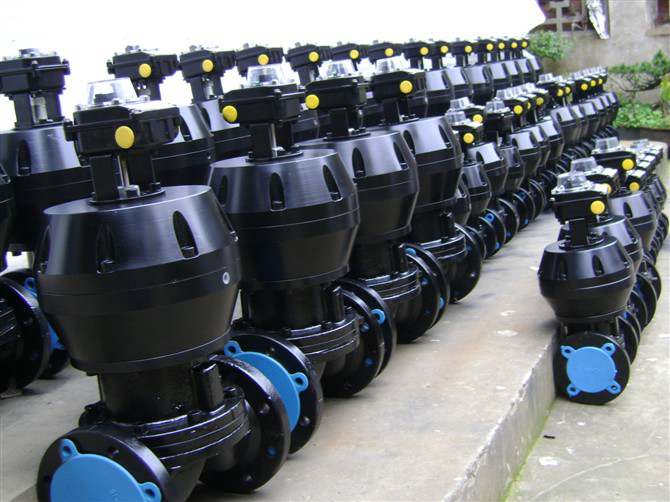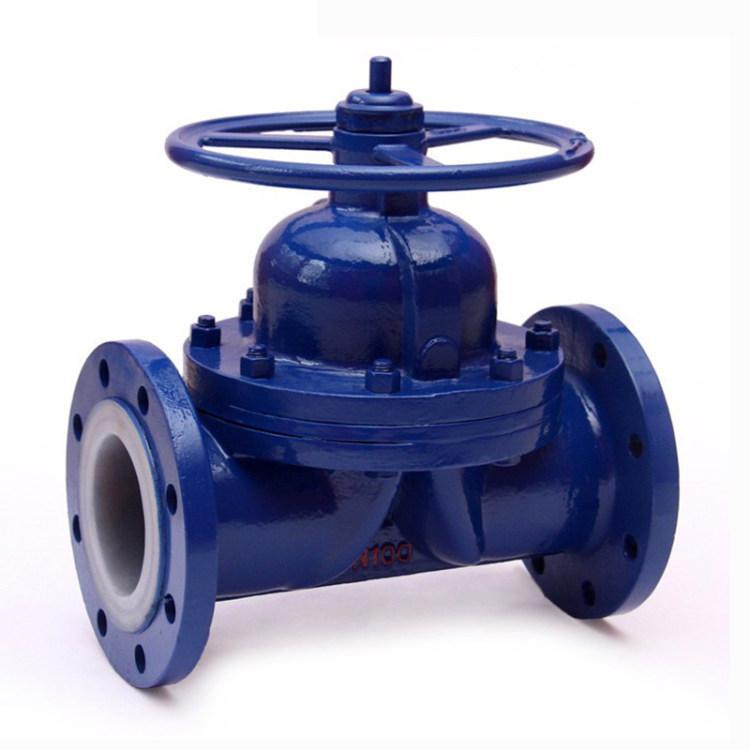Detailed Explanation of Diaphragm Valve.
1. Definition and characteristics of diaphragm valves.
A diaphragm valve is a special type of valve whose opening and closing component is an elastic diaphragm. It uses the movement of the diaphragm to control the on-off of fluid, featuring no leakage, quick response, and low operating torque. Diaphragm valves are particularly suitable for occasions where medium contamination needs to be prevented or quick opening and closing are required.

2. Classification and structure of diaphragm valves.
Diaphragm valves can be classified by structure into: weir-type, straight-through type, globe type, through type, weir type, right-angle type, etc.; by driving mode into: manual, electric, pneumatic, etc. A diaphragm valve is mainly composed of a valve body, a valve cover, a diaphragm, a valve seat, a valve stem and other components.
3. Working principle of diaphragm valves.
The working principle of a diaphragm valve mainly relies on the movement of the diaphragm to control the flow of fluid. A diaphragm valve consists of an elastic diaphragm and a compression part that drives the diaphragm to move. When the valve is closed, the diaphragm forms a seal with the valve body and the valve cover to prevent fluid from passing through. When the valve is opened, the force provided by the operating mechanism causes the compression part to rise, thereby lifting the diaphragm from the valve body, and the fluid starts to flow. By adjusting the force provided by the operating mechanism, the opening degree of the valve can be controlled, thereby controlling the flow rate of the fluid.
4. Key points for selection of diaphragm valves.
- Select appropriate diaphragm material and valve body material according to the characteristics of the medium.
- Select appropriate model and specification of the diaphragm valve according to the working pressure.
- Consider the operation mode of the valve, whether it is manual, electric or pneumatic.
- Consider the working environment and service life requirements of the valve.
5. Performance parameters of diaphragm valves.
The main performance parameters of diaphragm valves include: nominal pressure, nominal diameter, applicable medium, applicable temperature, driving mode, etc. These parameters need to be paid special attention to when selecting and using diaphragm valves.
6. Application scenarios of diaphragm valves.
Diaphragm valves are widely used in industries such as food, medicine, environmental protection, and chemical industry, especially in occasions where medium contamination needs to be prevented and quick opening and closing are required, such as sewage treatment and food processing.
7. Installation of diaphragm valves.
7.1 Preparation Before Installation.
- Ensure that the model and specification of the diaphragm valve are consistent with the design requirements.
- Check the appearance of the diaphragm valve to ensure no damage or rust.
- Prepare necessary installation tools and materials.
7.2 Detailed installation steps.
- Determine the installation position and direction of the diaphragm valve according to the pipeline layout.
- Install the diaphragm valve on the pipeline, ensuring that the valve body is parallel and tightly attached to the pipeline flange surface.
- Use bolts to fasten the valve body and the pipeline flange to ensure a firm connection.
- Check the opening and closing state of the diaphragm valve to ensure that the diaphragm can move freely without leakage.
7.3 Installation recautions.
- Avoid damaging the diaphragm during installation.
- Ensure that the driving mode of the diaphragm valve matches the operating mechanism.
- Ensure that the installation direction of the diaphragm valve is correct to avoid affecting its normal operation.
7.4 Common installation problems and solutions.
- Problem: Leakage after installation of the diaphragm valve. Solution: Check whether the connection is tight; if loose, re-tighten it; check whether the diaphragm is damaged; if so, replace it.
- Problem: The diaphragm valve is not flexible to open and close. Solution: Check whether the operating mechanism is flexible; if there is jamming, clean it; check whether the diaphragm is too tight; if so, adjust it.
7.5 Inspection and testing after installation.
- Check the appearance of the diaphragm valve to ensure no damage or leakage.
- Operate the diaphragm valve to check its opening and closing state, ensuring flexibility without jamming.
- Conduct a tightness test to ensure that the diaphragm valve has no leakage when closed.
Through the above steps and precautions, the correct installation and normal operation of the diaphragm valve can be ensured, so as to meet the use requirements.

